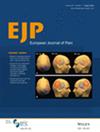Attenuation of Self-Induced Pain in Women With Nonsuicidal Self-Injury and Healthy Controls
Abstract
Background
Individuals who engage in nonsuicidal self-injury (NSSI) have a reduced pain sensitivity. Self-induced pain is attenuated compared with externally induced pain, and this phenomenon, sensory attenuation, could partly explain the insensitivity to pain in individuals with NSSI.
Methods
The objective was to assess sensory attenuation in women with NSSI compared to controls. In total, 81 women aged 18–35 years, mean age 23.4 (SD = 3.9), with NSSI (n = 41) or controls (n = 40) were recruited in this cross-sectional study. Self-induced and experimenter-induced pressure pain thresholds were assessed. Correlation tests assessed possible associations between sensory attenuation and NSSI frequency, NSSI duration and conditioned pain modulation.
Results
Across groups, the average self-induced pressure pain was 164.8 kPa (SE = 25.2, 95% CI = 114.8–214.7) higher than the average experimenter-induced pressure pain (d = 0.66). On average, NSSI participants displayed 106.7 kPa (SE = 42.9, 95% CI = 21.7–191.8) higher pressure pain thresholds than controls (d = 0.42), but there was no significant interaction effect for group (NSSI vs. controls) and condition (self-induced vs. experimenter-induced pain) (p = 0.102). However, a greater number of NSSI participants than controls were identified as exhibiting sensory attenuation (p = 0.022) when applying a threshold of ≥ 10% for sensory attenuation. Sensory attenuation correlated with conditioned pain modulation (tau = 0.17; p = 0.025), but not with NSSI frequency or duration.
Conclusion
Sensory attenuation of self-induced pressure was more prevalent in participants with NSSI than in controls, but there was no evidence that sensory attenuation was related to NSSI frequency or duration. The correlation between the sensory attenuation and conditioned pain modulation may be an indication of mutual anti-nociceptive mechanisms.
Significance Statement
Sensory attenuation of self-induced pain was present in both participants with NSSI and controls, but a greater number of NSSI participants were identified as exhibiting sensory attenuation, applying a threshold of ≥ 10% for sensory attenuation. Sensory attenuation may facilitate NSSI behaviour because when pain is attenuated, the pain barrier for engaging in self-harm will be reduced.


 求助内容:
求助内容: 应助结果提醒方式:
应助结果提醒方式:


